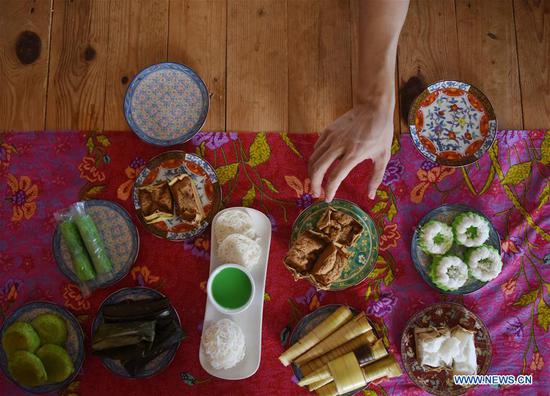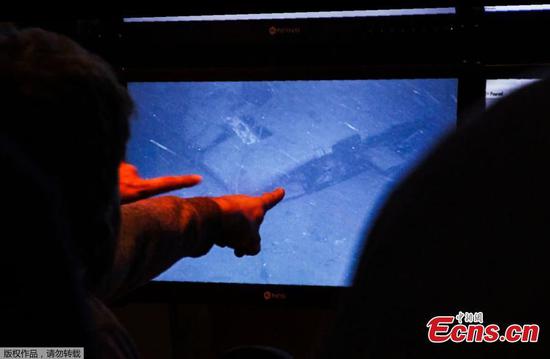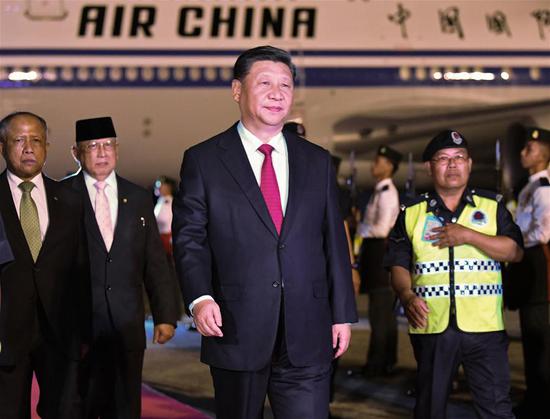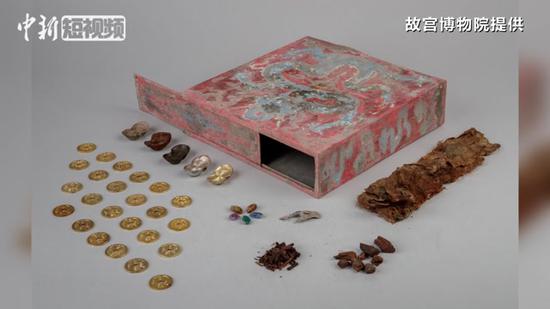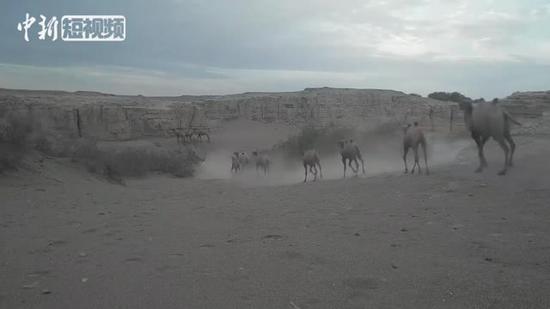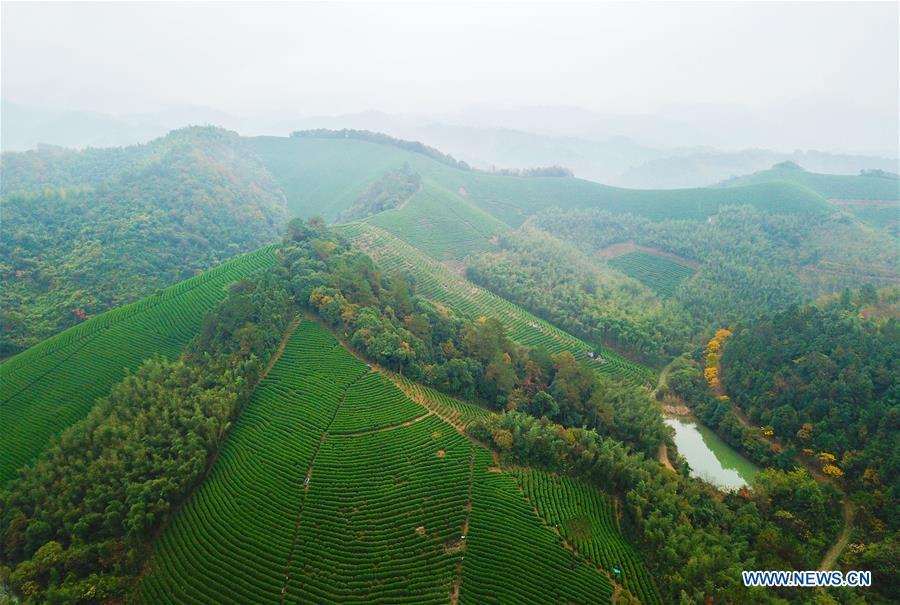
Aerial photo taken on Nov. 16, 2018 shows a tea garden in Lujia Village of Anji County, east China's Zhejiang Province. Lujia Village is located in the mountainous region in northeastern Anji. The village has a population of over 2,200 and about 533 hectares of bamboo forests. To build a beautiful village and improve the living of local villagers, Lujia implemented a comprehensive plan for rural, industrial and tourism development in recent years. The income of the village's collective economy surged from 18,000 yuan (about 2,500 U.S. dollars) in 2011 to 3.3 million yuan (about 475,000 U.S. dollars) in 2017. The per capita income of local people arrives at 35,000 yuan (about 5,000 U.S. dollars). So far, the village has collective assets valued at nearly 200 million yuan (about 28.8 million U.S. dollars). (Xinhua/Meng Chenguang)
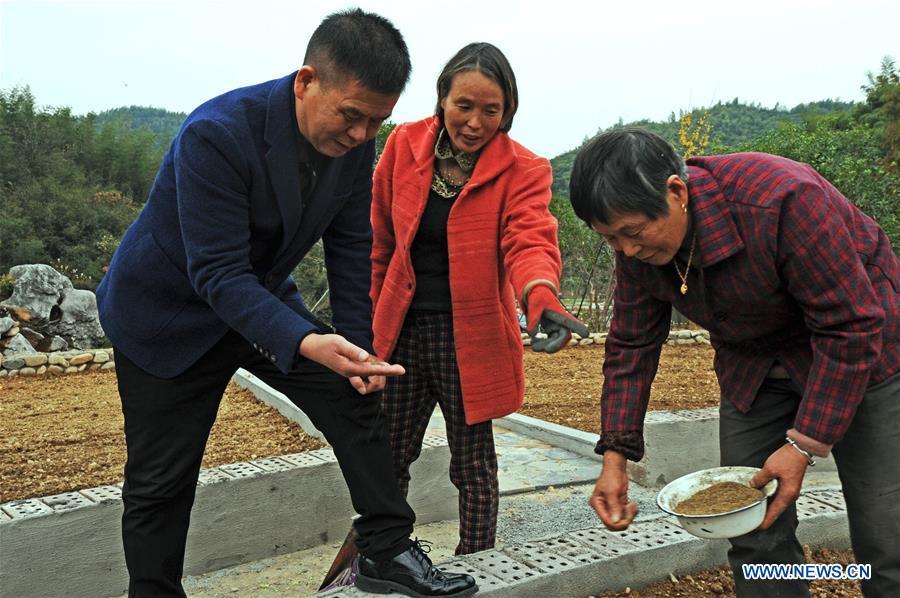
Zhu Renbin (L), secretary of the Communist Party of China local branch in Lujia Village, discusses dandelion planting with farmers at a traditional Chinese medicine farm in Lujia Village of Anji County, east China's Zhejiang Province, Nov. 14, 2018. Lujia Village is located in the mountainous region in northeastern Anji. The village has a population of over 2,200 and about 533 hectares of bamboo forests. To build a beautiful village and improve the living of local villagers, Lujia implemented a comprehensive plan for rural, industrial and tourism development in recent years. The income of the village's collective economy surged from 18,000 yuan (about 2,500 U.S. dollars) in 2011 to 3.3 million yuan (about 475,000 U.S. dollars) in 2017. The per capita income of local people arrives at 35,000 yuan (about 5,000 U.S. dollars). So far, the village has collective assets valued at nearly 200 million yuan (about 28.8 million U.S. dollars). (Xinhua/Tan Jin)
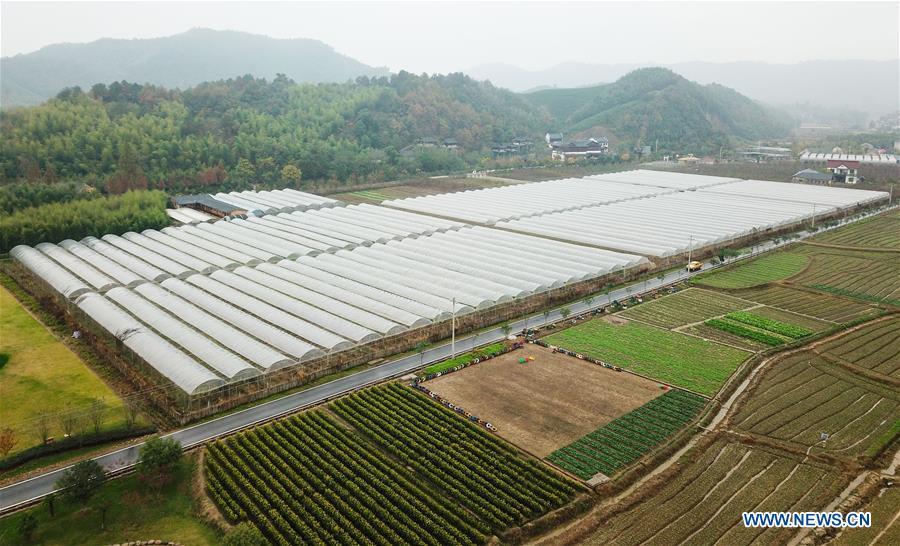
Aerial photo taken on Nov. 16, 2018 shows a farm in Lujia Village of Anji County, east China's Zhejiang Province. Lujia Village is located in the mountainous region in northeastern Anji. The village has a population of over 2,200 and about 533 hectares of bamboo forests. To build a beautiful village and improve the living of local villagers, Lujia implemented a comprehensive plan for rural, industrial and tourism development in recent years. The income of the village's collective economy surged from 18,000 yuan (about 2,500 U.S. dollars) in 2011 to 3.3 million yuan (about 475,000 U.S. dollars) in 2017. The per capita income of local people arrives at 35,000 yuan (about 5,000 U.S. dollars). So far, the village has collective assets valued at nearly 200 million yuan (about 28.8 million U.S. dollars). (Xinhua/Meng Chenguang)
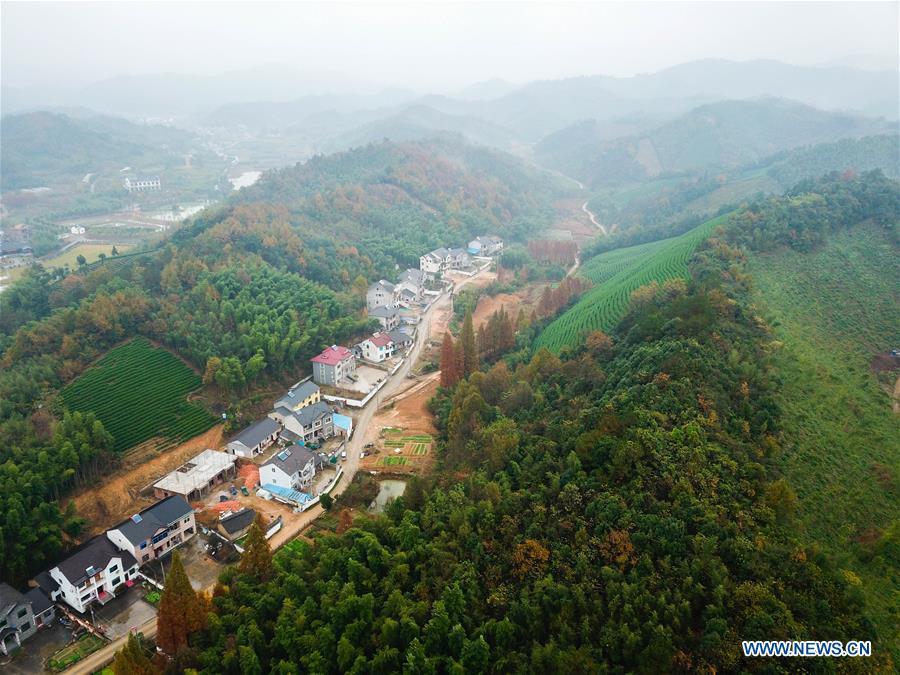
Aerial photo taken on Nov. 16, 2018 shows the scenery of Lujia Village in Anji County, east China's Zhejiang Province. Lujia Village is located in the mountainous region in northeastern Anji. The village has a population of over 2,200 and about 533 hectares of bamboo forests. To build a beautiful village and improve the living of local villagers, Lujia implemented a comprehensive plan for rural, industrial and tourism development in recent years. The income of the village's collective economy surged from 18,000 yuan (about 2,500 U.S. dollars) in 2011 to 3.3 million yuan (about 475,000 U.S. dollars) in 2017. The per capita income of local people arrives at 35,000 yuan (about 5,000 U.S. dollars). So far, the village has collective assets valued at nearly 200 million yuan (about 28.8 million U.S. dollars). (Xinhua/Meng Chenguang)
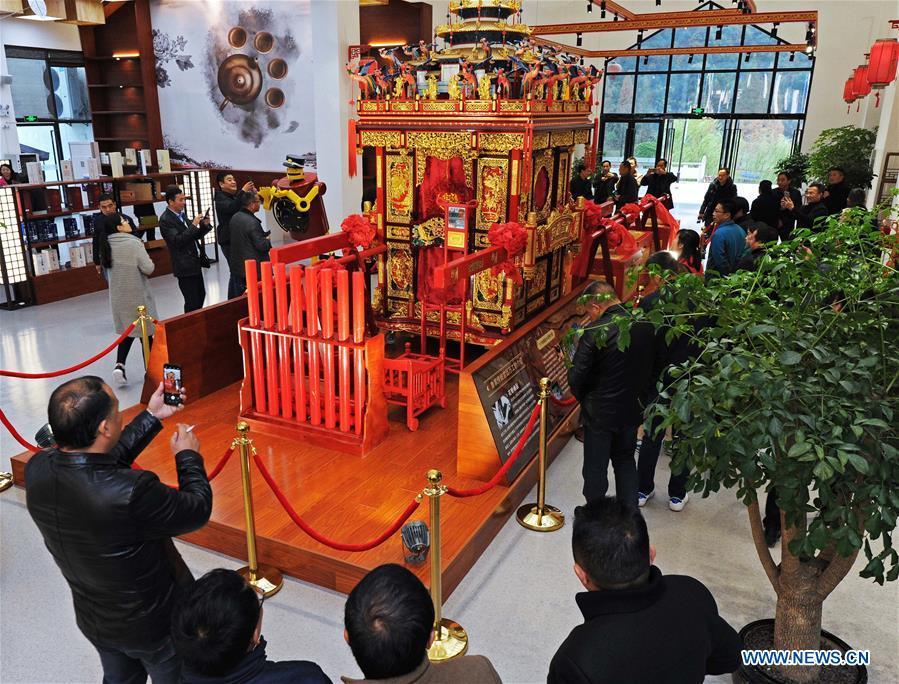
Tourists view a traditional sedan chair made by local carpenter Guo Jinxian in Lujia Village of Anji County, east China's Zhejiang Province, Nov. 16, 2018. Lujia Village is located in the mountainous region in northeastern Anji. The village has a population of over 2,200 and about 533 hectares of bamboo forests. To build a beautiful village and improve the living of local villagers, Lujia implemented a comprehensive plan for rural, industrial and tourism development in recent years. The income of the village's collective economy surged from 18,000 yuan (about 2,500 U.S. dollars) in 2011 to 3.3 million yuan (about 475,000 U.S. dollars) in 2017. The per capita income of local people arrives at 35,000 yuan (about 5,000 U.S. dollars). So far, the village has collective assets valued at nearly 200 million yuan (about 28.8 million U.S. dollars). (Xinhua/Tan Jin)
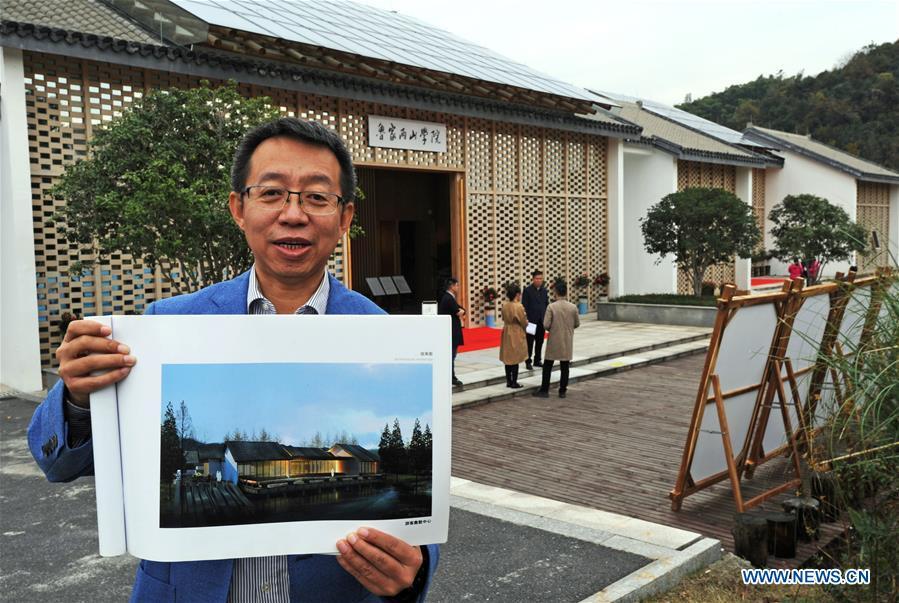
Ding Wei, a designer from south China's Guangdong Province, shows the effect picture of a building in Lujia Village of Anji County, east China's Zhejiang Province, Nov. 14, 2018. Lujia Village is located in the mountainous region in northeastern Anji. The village has a population of over 2,200 and about 533 hectares of bamboo forests. To build a beautiful village and improve the living of local villagers, Lujia implemented a comprehensive plan for rural, industrial and tourism development in recent years. The income of the village's collective economy surged from 18,000 yuan (about 2,500 U.S. dollars) in 2011 to 3.3 million yuan (about 475,000 U.S. dollars) in 2017. The per capita income of local people arrives at 35,000 yuan (about 5,000 U.S. dollars). So far, the village has collective assets valued at nearly 200 million yuan (about 28.8 million U.S. dollars). (Xinhua/Tan Jin)
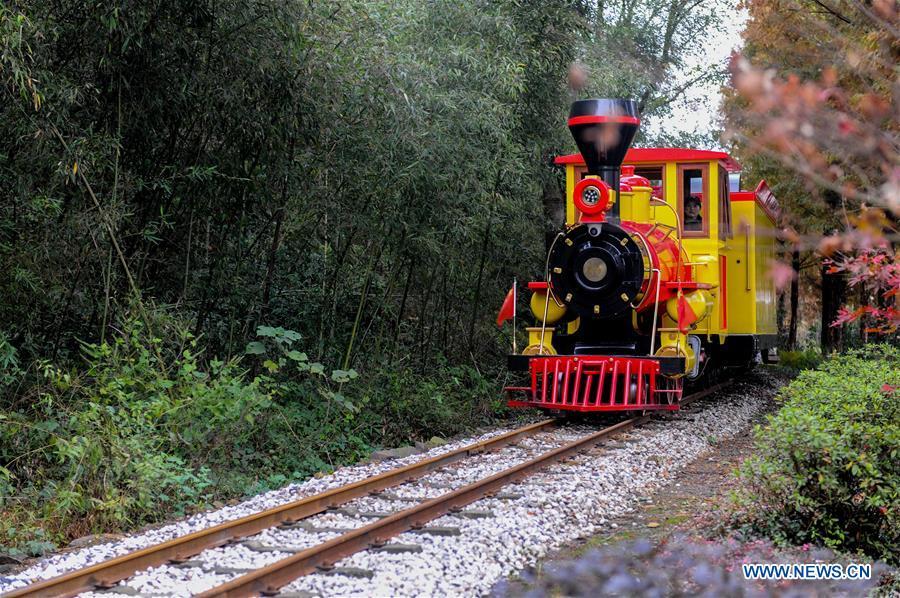
A sightseeing train runs across Lujia Village in Anji County, east China's Zhejiang Province, Nov. 17, 2018. Lujia Village is located in the mountainous region in northeastern Anji. The village has a population of over 2,200 and about 533 hectares of bamboo forests. To build a beautiful village and improve the living of local villagers, Lujia implemented a comprehensive plan for rural, industrial and tourism development in recent years. The income of the village's collective economy surged from 18,000 yuan (about 2,500 U.S. dollars) in 2011 to 3.3 million yuan (about 475,000 U.S. dollars) in 2017. The per capita income of local people arrives at 35,000 yuan (about 5,000 U.S. dollars). So far, the village has collective assets valued at nearly 200 million yuan (about 28.8 million U.S. dollars).(Xinhua/Zhang Liqing)
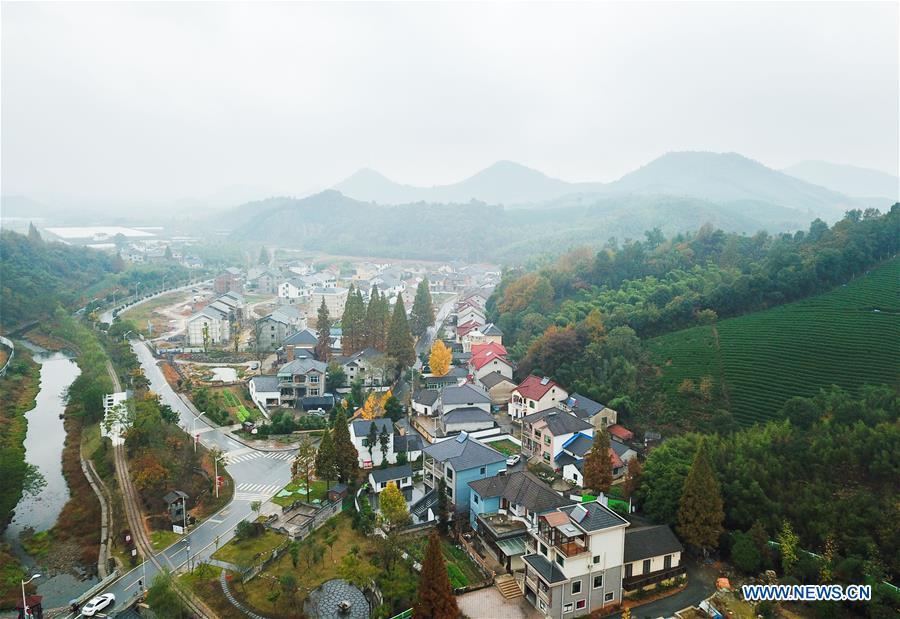
Aerial photo taken on Nov. 16, 2018 shows the scenery of Lujia Village in Anji County, east China's Zhejiang Province. Lujia Village is located in the mountainous region in northeastern Anji. The village has a population of over 2,200 and about 533 hectares of bamboo forests. To build a beautiful village and improve the living of local villagers, Lujia implemented a comprehensive plan for rural, industrial and tourism development in recent years. The income of the village's collective economy surged from 18,000 yuan (about 2,500 U.S. dollars) in 2011 to 3.3 million yuan (about 475,000 U.S. dollars) in 2017. The per capita income of local people arrives at 35,000 yuan (about 5,000 U.S. dollars). So far, the village has collective assets valued at nearly 200 million yuan (about 28.8 million U.S. dollars). (Xinhua/Meng Chenguang)
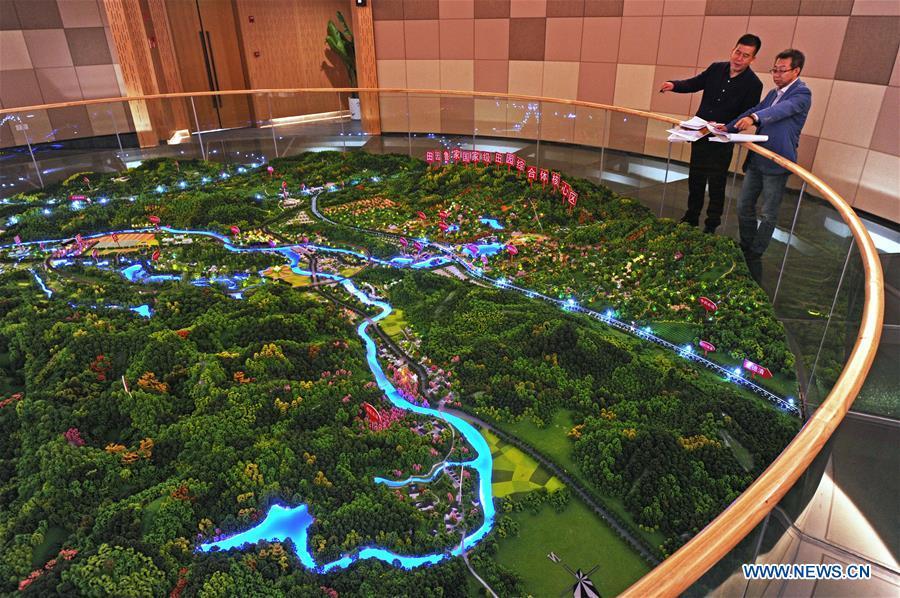
Zhu Renbin (L), secretary of the Communist Party of China local branch in Lujia Village, discusses the village's development plan with Ding Wei, a designer from south China's Guangdong Province, in Lujia of Anji County, east China's Zhejiang Province, Nov. 14, 2018. Lujia Village is located in the mountainous region in northeastern Anji. The village has a population of over 2,200 and about 533 hectares of bamboo forests. To build a beautiful village and improve the living of local villagers, Lujia implemented a comprehensive plan for rural, industrial and tourism development in recent years. The income of the village's collective economy surged from 18,000 yuan (about 2,500 U.S. dollars) in 2011 to 3.3 million yuan (about 475,000 U.S. dollars) in 2017. The per capita income of local people arrives at 35,000 yuan (about 5,000 U.S. dollars). So far, the village has collective assets valued at nearly 200 million yuan (about 28.8 million U.S. dollars). (Xinhua/Tan Jin)
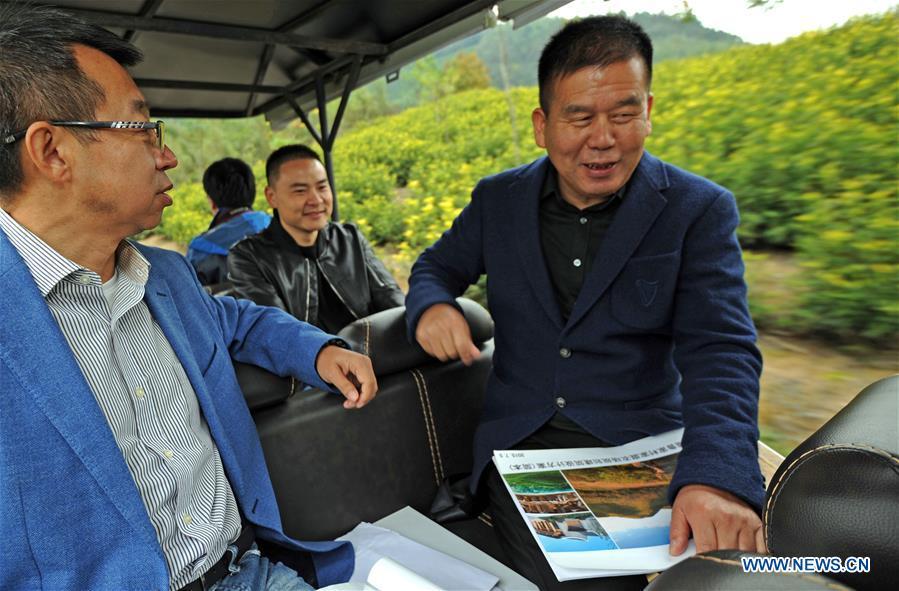
Zhu Renbin (1st R), secretary of the Communist Party of China local branch in Lujia Village, discusses the village's development plan with Ding Wei (1st L), a designer from south China's Guangdong Province, in Lujia of Anji County, east China's Zhejiang Province, Nov. 14, 2018. Lujia Village is located in the mountainous region in northeastern Anji. The village has a population of over 2,200 and about 533 hectares of bamboo forests. To build a beautiful village and improve the living of local villagers, Lujia implemented a comprehensive plan for rural, industrial and tourism development in recent years. The income of the village's collective economy surged from 18,000 yuan (about 2,500 U.S. dollars) in 2011 to 3.3 million yuan (about 475,000 U.S. dollars) in 2017. The per capita income of local people arrives at 35,000 yuan (about 5,000 U.S. dollars). So far, the village has collective assets valued at nearly 200 million yuan (about 28.8 million U.S. dollars). (Xinhua/Tan Jin)










